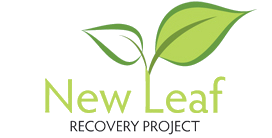Understanding & Overcoming Catastrophising Thoughts

Strategies for a Positive Mindset
Do you often find yourself spiralling into excessive worry and envisioning worst-case scenarios for even minor issues? If so, you might be engaging in a behaviour known as catastrophising.In our daily lives, it’s not uncommon for our thoughts to occasionally wander into a realm of exaggerated concerns. However, when this habit of imagining the worst becomes overwhelming and unmanageable, it can significantly impact our mental wellbeing.
In this article, we will delve into the concept of catastrophising, explore why we do it and provide practical strategies to break free from this harmful thought pattern.

Understanding Catastrophising
Catastrophising is a cognitive mindset where individuals tend to anticipate the most negative outcome in any given situation, regardless of how unlikely that outcome may be. Picture it as a mental snowball effect: a small worry starts rolling downhill and, as it gains momentum, it grows larger and faster until it transforms into an avalanche of anxiety and fear.
Call Us Today: 0300 999 0330Catastrophising Can Manifest in Three Common Types
Physical Catastrophic Thinking: This involves interpreting physical sensations as sure signs of serious illness. These thoughts can actually cause you physical harm through a phenomenon called the nocebo effect (essentially a reverse placebo effect).
Social Catastrophic Thinking: You see two of your friends at lunch, and you weren’t invited. Do you convince yourself that they are talking about you, they don’t like you, and they’re planning to humiliate you? This type of thinking can lead to very serious cases of social anxiety.
Accidents/Danger Catastrophic Thinking: You call your friend and they don’t pick up. Do you become convinced that they’ve been in a terrible accident and imagine all of his injuries in graphic detail? This type of catastrophic thought is very common and can cause you a great deal of unnecessary distress.
The Dangers of Catastrophic Thinking
It may come as no surprise that about 65 per cent of our self-talk is negative. While all negative self-talk is typically bad, catastrophic thinking is especially toxic. Catastrophic thinking causes unnecessary stress – the number one addiction relapse trigger. This leads to spikes in cortisol (the stress hormone), which actually impairs your ability to react effectively if a crisis does arise. It can also make you lose hope, believing the worst-case scenario to be inevitable and seeing no point in taking action. This can turn into a self-fulfilling prophecy in which your dreadful imagined future becomes your perfectly avoidable reality.
In many situations, people turn to drugs or alcohol to cope with the discomfort caused by catastrophic thoughts.
Call Us Today: 0300 999 0330The Link Between Catastrophising and Substance Abuse
The co-occurrence of anxiety disorders and substance abuse is remarkably common, with at least 75 per cent of these cases developing due to self-medication of anxiety issues with drugs or alcohol. Using substances to self-medicate can become so ingrained that it occurs almost automatically. At the first sign of discomfort, you may turn to your go-to substance without even realising why you’re doing it. You may not be aware that you’re engaging in catastrophic thinking until an attempt to quit an active addiction sends your thought patterns out of control.
Ways to Stop Catastrophising
Identify Your Catastrophic Thoughts: When fretting about future scenarios, ask yourself, ‘Am I causing my own suffering?’
The secret to overcoming catastrophic thinking is not to try to convince yourself that the disasters you’ve imagined can’t possibly come true because these outcomes are often technically possible (though highly unlikely). The key is to recognise these thoughts for what they are, check them, and stop them from causing needless suffering.
Centre Yourself Through Mindfulness: Mindfulness meditation is a powerful antidote to toxic thinking, and mindfulness therapy is a great tool for sobriety. It’s quite a simple concept, but it takes some practice to fully develop this skill.
Through mindfulness meditation, you can train yourself to be aware of your reactions and conditioned responses and learn to control them. So, next time you find yourself caught up in your thought patterns, you’ll be able to reel yourself back into the present moment rather than projecting yourself into an anxiety-ridden future.
Imagine the Best-Case Scenario: What’s the most optimistic possible explanation for your situation? Once you’ve identified this best-case scenario, carefully consider the likelihood that this brighter possibility more closely represents reality than the disastrous conclusion you’ve come to. Catastrophic thinking is irrational, so this type of rationalising goes a long way toward banishing it.
Cognitive Behavioural Therapy (CBT): One of the most effective methods for managing anxious thoughts and catastrophising is cognitive behavioural therapy (CBT). During CBT sessions, you’ll learn to identify dysfunctional thoughts and behaviours, understand how they cause unnecessary stress in your life, and develop strategies to eradicate them. CBT is commonly used in addiction treatment, as destructive thoughts and behaviours are very closely tied to substance abuse patterns.
By implementing these strategies and seeking appropriate treatment when needed, you can break free from the grip of catastrophic thinking and lead a more positive and balanced life.
Call Us Today: 0300 999 0330Receive a Free Call Back
"*" indicates required fields
Our Complete Recovery Journey - from your initial enquiry, all the way through treatment and beyond into ongoing support, New Leaf Recovery are there to guide and support you.
New Leaf offers a complete journey of treatment - from initial detoxification and rehabilitation to ongoing support, including aftercare, family support, and beyond into long-term recovery.
Getting the right accommodation enables us to provide the right backdrop for our recovery methods. Any form of rehabilitation needs to happen in a safe, comfortable, secure and friendly environment.
Receive a Free Call Back
"*" indicates required fields










